|
Zezankyo opened in April 2009 and is the third outpost of tempura guru Tetsuya Saotome, who for thirty years ran a well-regarded tempura restaurant, cooking in a back street location in Kayabcho. This is still in operation, as is his Roppongi Hills establishment Mikawa, but the man himself cooks here, in a four-storey building near the Sumida river (about two miles from the Ginza). The style is very traditional, with no modern flourishes or gimmicks. Chef Tetsuya Saotome has been making tempura since 1962, and is interested in calligraphy – he sometimes demonstrates this to customers. The restaurant had a Michelin star from 2010 to 2014, but lost it in 2015. The restaurant is tucked way down a little maze of residential streets. It is not particularly hard to find by Tokyo standards, though I had reckoned without the talents of our alarmingly elderly taxi driver, who visibly decided to ignore the satellite navigation system as we neared the restaurant and instead took it upon himself head off down a doubtless interesting yet uncharted route, but one that did not lead to the restaurant. After a time it became clear that we were hopelessly lost. Rather than phone the restaurant as I suggested he eventually abandoned the car and wandered off to seek guidance from random locals. At one point there appeared to be a whole committee of people in the street discussing the best route with the driver, with what I presume was the traditional helpful advice in such circumstances: "Ah, well I wouldn't start from here if I was you". Eventually we made it, and I have to say that this was a fairly typical Tokyo taxi experience. The drivers are unfailingly helpful and polite, invariably male and usually elderly, generally with a barely passing acquaintance with either the city's roads in this admittedly vast metropolis or, more importantly, with their own sat-nav system, which is really almost all that should be needed. Journeys usually end with being delivered to an address near where you need to be, yet not quite exactly the door you need, which to be fair is partly due to Tokyo's eccentric street numbering system. Back to the tempura. The dining room has just ten tightly spaced seats arrayed around a counter, the extractor fan rather curiously shaped in the form of a stetson hat. The "omakese" menu was around £90 a head. This started with prawns, first the body and then the head and leg. The shellfish were undeniably fresh, still moving as the sous chef prepared them for frying. The batter was very light and avoided greasiness. This was followed by uni (sea urchin) wrapped in a leaf and then fried, which was unusual and worked well. Next was goby, a pleasant tasting fish, and then excellent tender squid. Tempura of ginkgo nuts was fine, and then what should have been the highlight, the matsutake mushrooms, which were just in season at the time of our visit. This is the priciest mushroom on the planet, the best Japanese specimens reaching $2,000 a kilo, though imported ones (the vast majority) go for less than a tenth of this. They cannot be farmed and are found under leaves at the base of pine trees (the name means "pine mushroom"). I have to say that although these had good flavour they were rather undercooked, meaning that the stalk in particular was rather chewy. I have eaten enough of these over the years to know wha they should taste like, and today's were not quite what they might have been. The next dish was flying fish, which had very good flavour. This was followed by anago (sea eel) that was excellent. The penultimate fried dish was fried asparagus and green chilli, the latter working particularly well. The final fried dish was kakiage with prawn and rice. Kakiage is a generic term for a more rough and ready tempura using using kobashira (the adductor muscles of clams, resembling small scallops). roughly chopped vegetables and usually some form of shellfish, in this case prawns. It is often served over a bowl of boiled rice, as it was here. It is a sort of comfort food version of tempura, and very enjoyable it is too. This came with a bowl of good miso soup where the stock was quite rich. Dessert was a sweet red bean concoction that tasted better than it looked. The bill came to €39,636 for two (£108 per head) with some beer to drink. I think this was a touch higher than usual due to the matsutake mushroom, but nonetheless it was pricier than some of the other prestigious tempura restaurants in Tokyo. The service was functional rather than particularly friendly. Overall I thought the restaurant was certainly good, but was some way from the best tempura that I have eaten.
|

Mikawa Zezankyo
1-3-1 Fukuzumi, Koto-ku, Tokyo, 135-0032, Japan
- Map
- +81 3 3643-8383
- Restaurant website
-
 outside
outside

-
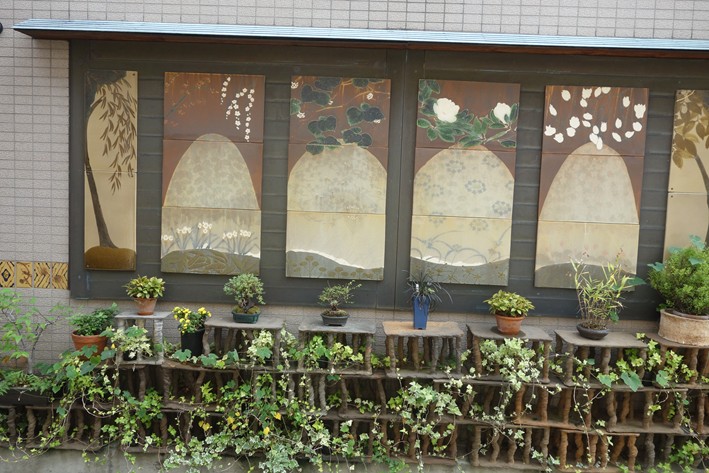 wall outside
wall outside

-
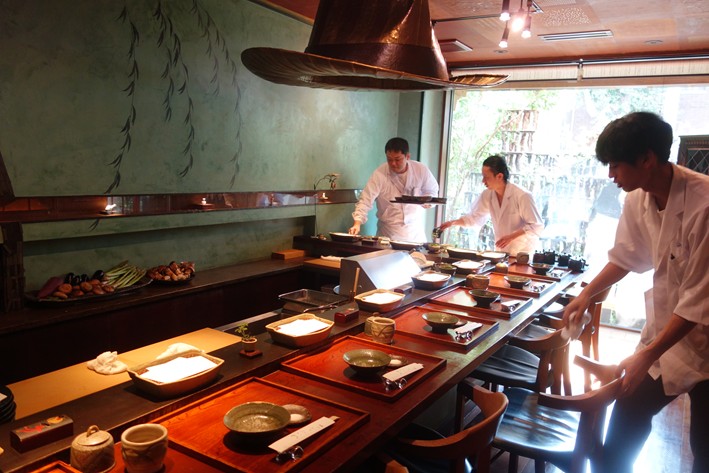 dining room
dining room

-
 chefs in action
chefs in action

-
 prawn tempura
prawn tempura

-
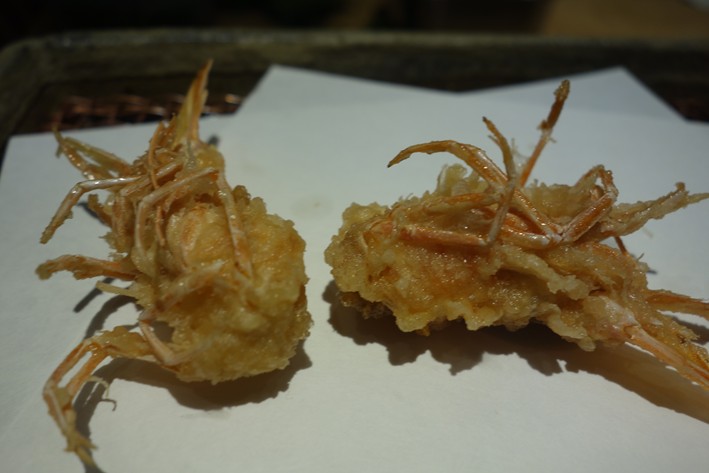 prawn heads
prawn heads

-
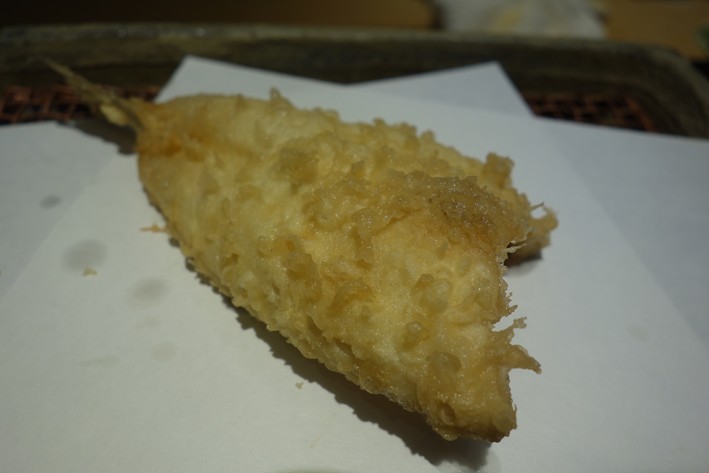 goby tempura
goby tempura

-
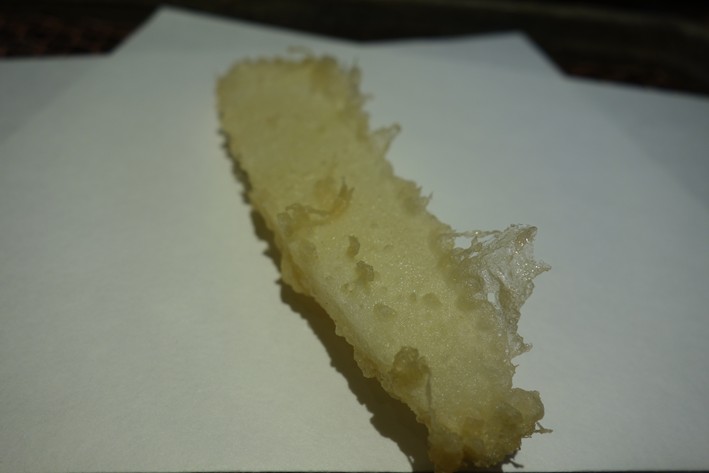 squid tempura
squid tempura

-
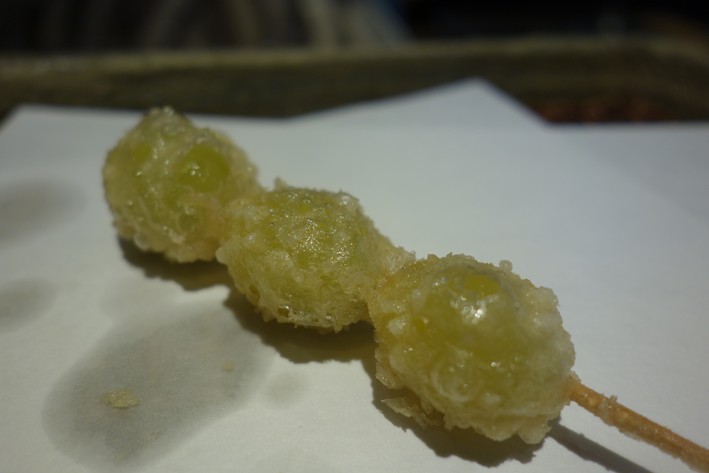 ginkjo nuts
ginkjo nuts

-
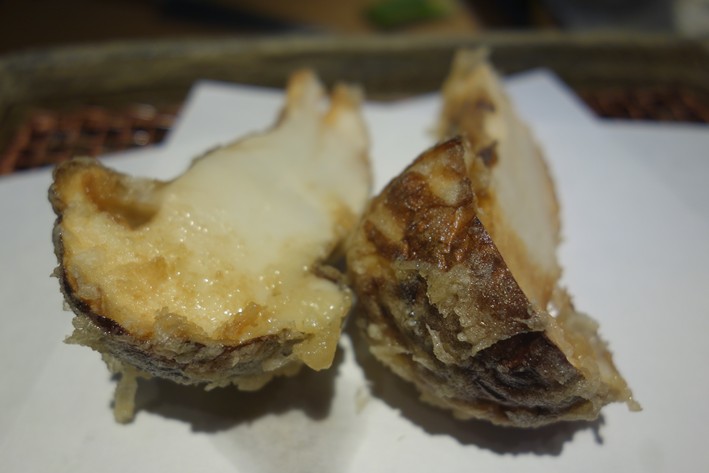 matsutake mushroom
matsutake mushroom

-
 flying fish tempura
flying fish tempura

-
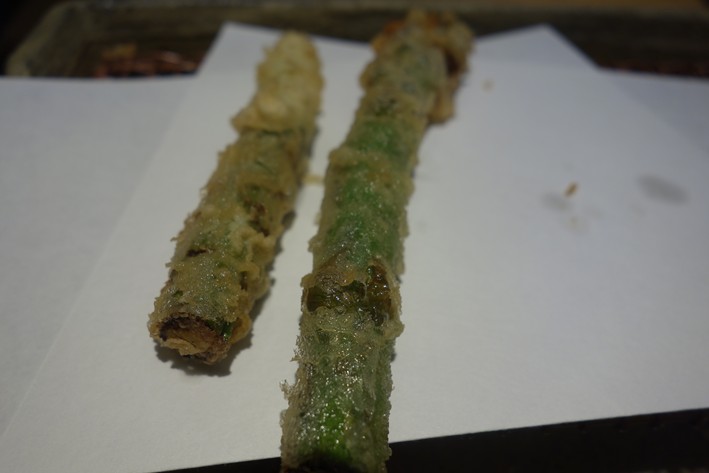 asparagus tempura
asparagus tempura

-
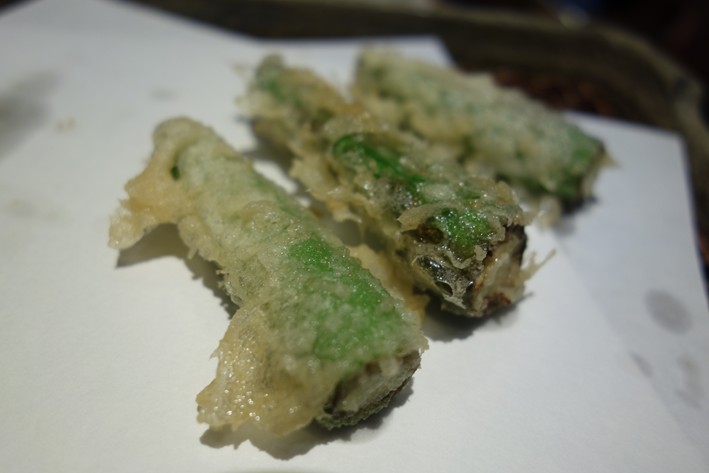 green chilli tempura
green chilli tempura

-
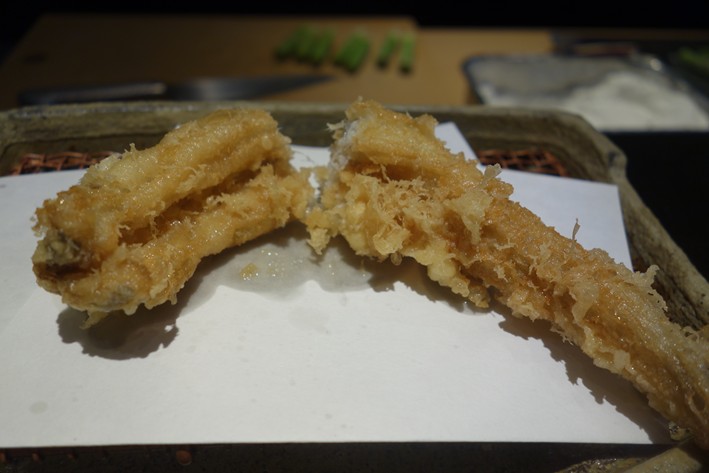 sea eel tempura
sea eel tempura

-
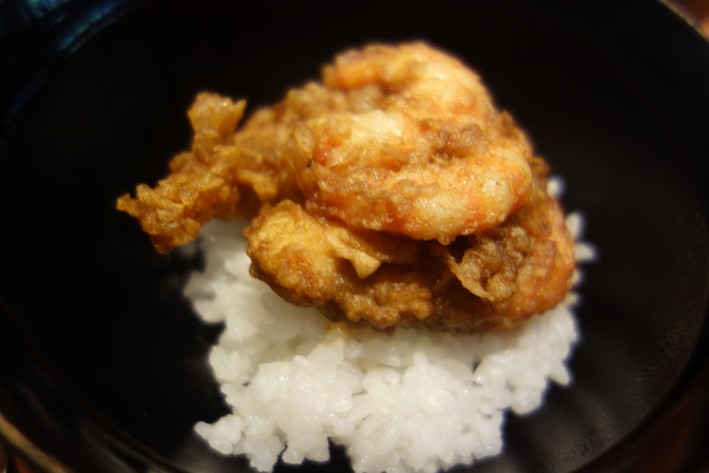 kakiage
kakiage

-
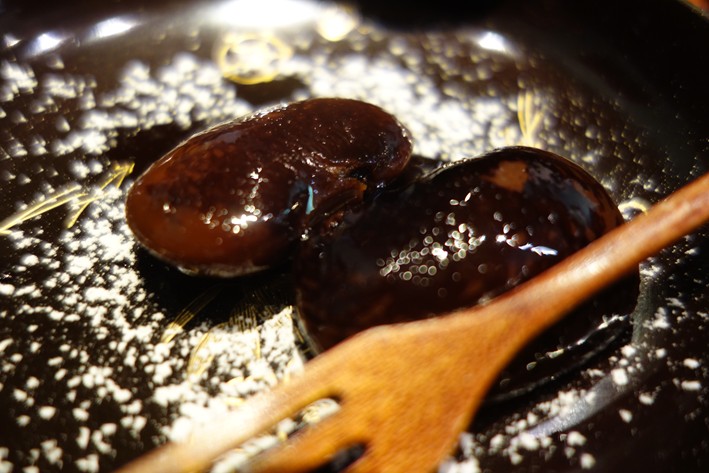 red bean dessert
red bean dessert

-
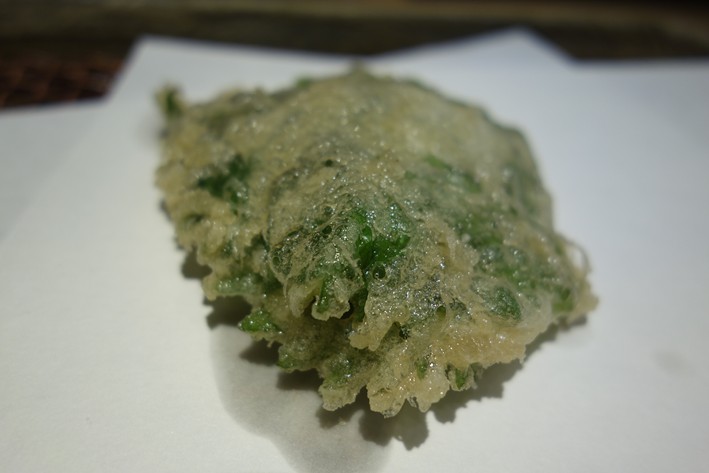 uni wrapped in leaf
uni wrapped in leaf

Japanese cuisine
 Average Price £115
Price I paid £108
Value for money
££££££
Overall rating 16/20
Michelin star
Average Price £115
Price I paid £108
Value for money
££££££
Overall rating 16/20
Michelin star

The type of cuisine served at this restaurant
Typical price for three courses and modest wine
What I actually paid on this particular visit
Calculated from overall rating/average price: £££££ is best, £ least good
Score for the food from 1 to 20, with 20 being world class
Currently has at least one Michelin star


















Add a comment
Thank you for submitting your comment, this will be checked and added to the website very soon.
User comments